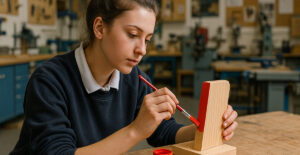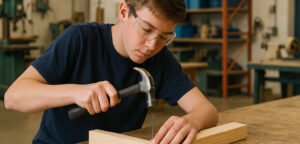Thick and Thin Line Technique
Thick and thin line technique is a way to enhance the presentation of design drawings. It makes sketches ‘pop out’ from the page and more three-dimensional. This article introduces students to this technique and contains a free printable worksheet to help revise this material. Rules for thick and thin line technique It is sensible to … Read more


